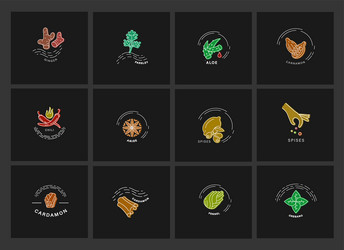Saving Seeds from Herbs and Spices: A Comprehensive Guide
When it comes to growing your own herbs and spices, saving seeds is an excellent way to sustain your garden year after year. Not only does seed-saving help you save money, but it also allows you to preserve heirloom varieties and maintain a self-sufficient homestead. In this article, we will explore the top 15 herbs and spices that are relatively easy to save seeds from.
1. Basil:
Basil is a popular herb with many different cultivars available. To save basil seeds, allow the plant to flower and go to seed. Once the flowers have dried up, remove them carefully and collect the small black seeds within.
2. Cilantro/Coriander:
Cilantro leaves are widely used in cooking, while coriander refers specifically to its dry seeds. To save cilantro/coriander seeds, let the plant bolt (produce tall stems) and form small white flowers followed by green-brown seed pods. Harvest these pods when they turn brown and start splitting open.
3. Dill:
Dill produces beautiful feathery foliage that can be used fresh or dried in various dishes. Saving dill seeds involves allowing the plant’s yellow umbrella-shaped flowers to turn brown before harvesting their tiny dark-brown or blackish seeds.
4. Fennel:
Fennel is known for its licorice-like flavor found in both its bulb-like stem base as well as its feathery fronds. When fennel flowers fade away, they give rise to clusters of aromatic greenish-brown or tan-colored fennel seeds.
5. Parsley:
Parsley adds a fresh touch of flavor as a garnish or ingredient in numerous culinary delights. To harvest parsley seeds effectively, allow the plant’s flower heads (umbels) to mature into small green fruits containing brown oval-shaped parsley seeds.
6. Chives:
Chives are a versatile herb used in soups, salads, and many other dishes. To save chive seeds, let the purple flowers dry up and turn brown. Then gently shake or brush the flower heads to collect the small black seeds they contain.
7. Oregano/Marjoram:
These two herbs belong to the same family and have similar flavor profiles. They are generally grown as perennials and can be propagated by saving their tiny brown seeds found in dried flower heads.
8. Thyme:
Thyme is a highly aromatic herb that comes in numerous varieties such as lemon thyme or French thyme. Saving thyme seeds requires collecting them from dried flower clusters once they have turned brown.
9. Sage:
Sage leaves have a strong flavor that adds depth to various dishes, particularly Thanksgiving stuffing! To save sage seeds, allow its purple flowers to wither away and form small seed capsules containing light-brown or grayish seeds.
10. Rosemary:
Rosemary is an evergreen shrub with needle-like leaves that add a delightful fragrance to roasts and stews alike. Although rosemary can be challenging to grow from seed due to low germination rates, you can still try saving its tiny dark-brown seeds for future planting.
11. Mint:
Mint is famously known for its invigorating aroma and refreshing taste used in teas, cocktails, desserts, and more! However, most mint varieties do not produce true-to-type plants from seed; hence it’s better propagated through root division or cuttings instead of seed-saving.
12: Lemongrass:
Lemongrass adds a unique citrusy flavor commonly found in Asian cuisines like Thai curries or Vietnamese pho soup. While lemongrass primarily spreads via clumping bulbs rather than producing viable seeds, you may occasionally find thin black lemongrass seeds within its spent flower heads.
13. Turmeric:
Turmeric is a vibrant yellow spice often used in curries, smoothies, and herbal remedies. To save turmeric seeds, allow the plant’s flowers to fade away and form small seed capsules containing dark-brown or blackish seeds.
14. Paprika/Peppers:
Paprika comes from dried ground bell peppers or chili peppers that are rich in flavor and color. Saving pepper seeds involves removing them from the mature fruit when it is fully ripe, rinsing off any residue, then drying them thoroughly before storage.
15: Mustard:
Mustard seeds are tiny powerhouses packed with flavor commonly used in condiments like mustard sauce or pickles. To save mustard seeds, wait until the plant’s yellow flowers transform into thin green pods containing brown or black round-shaped seeds.
In conclusion, saving herb and spice seeds allows you to maintain a sustainable garden while preserving your favorite varieties for future use. Remember to label and store your saved seeds properly in cool dry conditions for optimal viability. Happy seed-saving!


Leave a comment